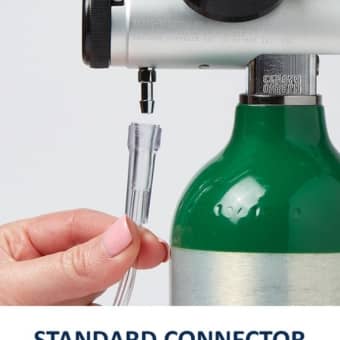Sanitizing wipes are a good way to kill harmful germs on your skin. This guide will show you the specific bacteria, viruses, and fungi that these wipes can target. It will help you understand their role in maintaining your health. Knowing which germs you can cut helps you make informed choices. You can then adopt hygiene practices that protect you and those around you. Stay tuned as we explore the science of hand sanitizing wipes. Are they effective for your daily routine?

Table of Contents
Key Takeaways:
-
Broad-Spectrum Efficacy: Hand sanitizing wipes kill many germs. They work on bacteria, viruses, and some fungi. This helps reduce infection risk.
-
Essential for High-Touch Surfaces: Use these wipes on high-touch surfaces, like doorknobs and electronics. Do so often. They kill pathogens that are harmful.
-
Hand sanitizing wipes clean hands when soap and water aren’t available. They are convenient and portable. They are quick and convenient.
I. Understanding Germs
The world is full of microorganisms called germs. You can classify them using various categories. These germs can be harmful. They may cause illness if they contact you or enter your body. To know which germs hand sanitizing wipes can kill, you must learn about the most common types of germs and their behavior in your environment.
1.1. Types of Germs
Any discussion about germs should start with this: they have several distinct categories. Each has unique traits and health risks.
| Type of Germ | Description |
| Bacteria | Single-celled organisms that can multiply rapidly and can cause infections. |
| Viruses | Agents that must invade a living cell to reproduce can lead to illnesses like the flu. |
| Fungi | Includes yeasts and molds that can be harmful in certain conditions, such as causing allergies. |
| Protozoa | Single-celled organisms that can be found in contaminated water and may cause diseases. |
| Prions | Infectious proteins that can cause neurodegenerative diseases are less common. |
After learning about germs, you can see why hygiene is vital to reducing infection risk. Using hand sanitizing wipes helps.
1.2. Germ Transmission

Germ transmission refers to how microorganisms can spread between hosts. Infection spreads through various paths, often without intention. These include contact with infected people, surfaces, and contaminated food and water. They also include airborne particles. This shows that good hygiene is important. Use products like hand sanitizing wipes to reduce your exposure.
Germ transmission is a fundamental aspect of understanding how diseases spread. Germs travel through common pathways. They can spread by shaking hands, touching contaminated surfaces, or through the air. Knowing this, you can take steps to reduce your risk. Also, using hand sanitizing wipes disrupts these pathways. This helps ensure your health and that of those around you.
1.3. Conclusion
Understanding germs is the first step in maintaining your health. Knowing the types of germs and how they spread empowers you. You can then take precautions. This makes hand sanitizing wipes a valuable part of your hygiene routine.
II. Hand Sanitizing Wipes
Everyone should know how vital good hand hygiene is. In our fast-paced world, germs are everywhere. Hand sanitizing wipes are great for times when soap and water aren’t available. They blend portability with effective germ killing. You can protect yourself and your loved ones from harmful pathogens. These antimicrobial wipes clean hands and reduce germs that cause illness.
2.1. Types of Hand Sanitizing Wipes
In the matter of hand sanitizing wipes, you will find a variety of options available on the market. Their effectiveness can vary. It depends on each product’s formulation and the concentration of its active ingredients. You’ll encounter wipes that contain alcohol or alternative antimicrobial agents instead. Both types can protect against germs. But it’s important to choose the right one for your needs.
-
Alcohol-based wipes often contain 60%–90% isopropyl alcohol or ethanol.
-
Non-alcohol wipes: Generally, use benzalkonium chloride or other antimicrobial agents.
-
Moisturizing wipes contain added ingredients that help prevent dryness.
-
Scented vs. unscented: Choose a wipe based on your preference. It can be fragrant or fragrance free.
-
Designers create disposable wipes for single use and easy disposal.
Knowing the differences can help you choose the right hand sanitizing wipes. They will meet your hygiene needs.
| Wipe Type | Germicidal Properties |
|---|---|
| Alcohol-Based | Highly effective against numerous bacteria and viruses. |
| Non-Alcohol | Effective against some bacteria, but less potent for viruses. |
| Moisturizing | Provides skin benefits, still offers some level of microbial protection. |
| Scented | Can include fragrances that are gentler on the senses. |
| Disposable | Convenient for quick cleaning without skin irritation. |
2.2. Ingredients and Their Effectiveness

To gauge the effectiveness of hand sanitizing wipes, analyze their germ-fighting ingredients. The most common active ingredient in many sanitizing wipes is alcohol. It is usually isopropyl alcohol or ethanol. They can destroy many harmful microorganisms. Other antimicrobial agents, like benzalkonium chloride, may be present. These components help the wipes kill or reduce germs on your hands.
Wipes with more alcohol are better at killing germs. They denature proteins in bacteria and viruses. The correct use of non-alcohol-based wipes provides effective help. For example, you must remove visible dirt before using any sanitizing wipe. This maximizes their effectiveness against pathogens.
III. How Hand Sanitizing Wipes Work
Despite their convenience, you might wonder exactly how hand sanitizing wipes cut germs. These wipes usually contain a solution with alcohol or other antimicrobials. They kill a wide range of pathogens on contact. They are useful when soap and water aren’t available. They enable hand hygiene upkeep during active periods of mobility.
3.1. Mechanism of Action

Hand sanitizing wipes seem like a simple hygiene solution. But their effectiveness relies on a specific mechanism of action. The primary active ingredient in most wipes is alcohol, usually in concentrations of 60% to 95%. This alcohol disrupts the cells of bacteria and viruses. It inactivates them. These products, when used to wipe your hands, contain alcohol. It penetrates the outer membrane of pathogens and neutralizes them.
Also, some wipes may have other antimicrobials, like benzalkonium chloride. It disrupts the microbes’ metabolism, boosting their germicidal properties. These wipes use physical action and chemical interaction. They are very effective at reducing microbes on your skin.
3.2. Factors Affecting Efficacy
Wipes may not always be as effective. Several factors can affect their germ-fighting ability. These are: the concentration of active ingredients, the contact time, and any organic matter, like dirt or food. To be effective, you must know how these elements affect your hand hygiene.
-
The concentration of alcohol or other active ingredients can affect germ-killing rates.
-
Contact time is vital. The wipe must stay on your skin long enough to work.
-
Organic matter can hinder the wipes. So, use them on clean surfaces.
Inadequate storage or outdatedness renders wipes ineffective in producing desired outcomes. Always check the label for storage instructions and use-by dates. This ensures the best germ-killing power. The next time you use a hand sanitizing wipe, keep these factors in mind. They will help you get the most from your efforts.
-
Proper storage conditions help maintain the efficacy of the wipes.
-
Choosing wipes with enough alcohol content is crucial for effective germ elimination.
-
Refresh wipes with the current inventory to avoid obsolete supplies.
Sanitizing wipes are a practical way to keep things clean at work, school, or while traveling. They reduce germs. But they should not replace handwashing with soap and water whenever possible. This is the best way to manage your health and hygiene.
IV. Tips for Effective Use of Hand Sanitizing Wipes
To maximize the benefits of hand sanitizing wipes, follow some tips. They ensure efficacy and proper use. Using these wipes can reduce the germs and bacteria on your hands and surfaces. Here are some key tips to consider:
-
Always check the label for the active ingredients. They must be effective against specific germs.
-
Cover hands or surfaces completely with wipes when sanitizing.
-
After wiping, let the surface air-dry. This allows the sanitizers to work.
-
Scrub hands to remove dirt and grime; then use wipes.
-
Toss used wipes into the trash can after each use. Do not flush them to avoid plumbing issues.
These tips will boost your germ-fighting efforts. They’ll help create a healthier environment for you and those around you.
4.1. Using Wipes Correctly

Apply hand sanitizing wipes in a structured sequence to ensure effectiveness. Start by wiping all surfaces of your hands. This includes between your fingers and under your nails. Pay attention to various areas, like your wrists, as these are often overlooked. Use at least one wipe for your hands. Use more when sanitizing surfaces. Ensure complete coverage to kill as many germs as possible.
It’s critical to keep your hands wet with the sanitizer for the time specified on the package. This time, let the wipes kill the germs and bacteria on your hands. If you wipe your hands and then dry them, you may reduce the sanitizer’s effectiveness.
4.2. Avoiding Common Mistakes
Many underestimate the need for full coverage with hand sanitizing wipes. It’s easy to rush through the process or only give your hands a quick wipe, which may leave germs behind. Apply intense pressure and scrub every surface of your hands thoroughly. Also, do not use sanitizing wipes instead of soap and water on dirty or greasy hands. Wipes may not remove some contaminants.
Effective use of hand sanitizing wipes involves recognizing these frequent missteps. Avoid using dry or expired wipes. They won’t sanitize. To keep the wipes potent, seal them. Store them away from excess moisture and heat. Always use the correct number of wipes. Follow the label’s instructions for the best results.
V. Pros and Cons of Hand Sanitizing Wipes
For anyone concerned about hygiene, hand sanitizing wipes can be a practical solution. Hand sanitizers serve as a substitute for soap and water to disinfect. Weigh the pros and cons before making them part of your daily cleaning routine.
5.1. Pros and Cons of Hand Sanitizing Wipes
| Pros | Cons |
|---|---|
| Convenient and portable | May not eliminate all types of germs |
| Effective against many bacteria and viruses | Can be less effective if hands are visibly dirty |
| Easy to use, no water required | Some wipes may contain harsh chemicals |
| Good for quick clean-ups | Single-use may contribute to waste |
| Can be used on multiple surfaces | Not a replacement for handwashing |
| Quick drying | Some may cause skin irritation |
| Readily available in stores | Effectiveness may vary by brand |
| Can be safe for kids | Not always effective on certain viruses |
| Good for on-the-go lifestyles | Wipes can dry out if not stored properly |
| Can reduce the spread of illness | Overuse may lead to resistance in germs |
5.2. Advantages

For a quick and effective way to stay hygienic on the go, use hand sanitizing wipes. These wipes are easy to use. They can clean your hands before eating or disinfect surfaces in public spaces. Their compact size makes them easy to carry in your bag. You’ll always have a sterile option when needed.
Also, hand sanitizing wipes kill many common bacteria and viruses. They are a good choice when soap and water are not available. The wipes are pre-moistened. They will clean your hands with no need for other products.
5.3. Disadvantages
Note that hand sanitizing wipes may not kill all germs. Some virus strains, like the flu and norovirus, may resist these wipes. Unclean hands neutralize the power of antibacterial products in incorrect use. This could create a false sense of security. You might assume you’re protected. But some harmful pathogens may still exist.
This ineffectiveness is worse because many wipes contain alcohol and other chemicals. They can kill germs, but they can irritate the skin of sensitive people. Also, some wipes are disposable. Using them often may harm the environment. For best protection against germs, use hand sanitizing wipes with proper hand washing.
VI. Step-by-Step Guide to Using Hand Sanitizing Wipes
Once again, it is vital to know how to use hand sanitizing wipes. This ensures they work best against germs and bacteria. This step-by-step guide can help you maintain proper hygiene at home or on the go.
6.1. Preparing to Use Wipes
You may think that using a wipe right away is enough. But preparation is crucial for effective sanitization. First, check the packaging for any specific instructions from the manufacturer. Guidelines may vary. Check the wipes’ seals and moisture levels. Dry wipes may not work. Having a clean workspace or area helps eliminate more contaminants.
Next, consider the surfaces or items you plan to clean with the wipes. Identify high-touch areas like doorknobs, light switches, or your phone. You can also keep hand sanitizing wipes handy in your bag, car, or workspace, ready for when you need them most. Being prepared simplifies the application process. It also keeps you proactive about your hygiene.
6.2. Application Process
Mastering hand sanitizing wipes demands a deliberate approach. Pull a wipe from the container and grasp it with a secure grip. For hand sanitization, rub the wipe all over your hands. Cover all areas, including between your fingers, under your nails, and around your wrists. The general recommendation is to rub your hands until they feel dry. This takes about 20 seconds, like washing with soap and water.
While using the wipe, avoid touching contaminated surfaces until your hands are dry. This ensures that the wipe does not transfer any germs back to your hands that it lifted. If you need to clean items or surfaces, wipe them with the sanitizing wipe. Then, let the area air dry. This will keep the disinfectant effective against germs.
Step by step, ensure the wipe touches various surfaces and your hands. Use the entire surface of the wipe for optimal coverage. Focus on filthy zones and items with high touch rates daily. This meticulous process minimizes the risk of germs remaining after the sanitization effort.
6.3. Disposal of Used Wipes

The proper disposal of used wipes is an integral part of the process you should not overlook. After using the wipes, dispose of them in a trash bin. Do not flush sanitizing wipes. They can clog toilets and harm the environment.
Also, after disposing of the used wipes, wash your hands. Or, use a sanitizer to kill any remaining germs on your fingers. It reinforces your hygiene efforts. It also minimizes the risk of cross-contamination.
Another way to dispose of waste is to know local practices. Some regions have rules for disposing of disinfectants. Following them can help the environment and keep your family safe. Stay vigilant about your hygiene after using sanitizers. Also, know the best local practices.
The Benefits of Using Hand Sanitizing Wipes for Daily Hygiene
You have learned that hand sanitizing wipes can kill many harmful germs on surfaces. These wipes are great for killing germs like E. coli, Salmonella, and the flu virus. They are perfect for keeping your daily environment clean. These sanitizing solutions help protect you and others from illness. They are especially useful in public or during flu season.
Remember, hand sanitizing wipes are a useful hygiene tool. But they should not replace thorough handwashing with soap and water when possible. Also, check the product labels. Ensure the wipes meet the needed disinfecting and sanitizing standards. Knowing which germs these wipes can kill will empower you. It will help you create a cleaner, healthier space for your loved ones.
FAQ
Q: What types of germs can hand sanitizing wipes kill?
Hand sanitizing wipes kill many germs, including bacteria, viruses, and some fungi. Most alcohol-based wipes can kill pathogens like E. coli, Salmonella, and Staphylococcus aureus. They also work against viruses, including influenza and the cold. But they may not work against some germs, like norovirus and C. difficile. Those need stricter cleaning methods.
Q: How effective are hand sanitizing wipes against COVID-19?
Wipes with at least 60% alcohol kill many coronaviruses. This includes the virus that causes COVID-19, SARS-CoV-2. To ensure optimal effectiveness, follow the product’s usage and contact time instructions. Longer contact time may increase efficacy. So, leave the wipe on surfaces for a while.
Q: Can hand sanitizing wipes cut antibiotic-resistant bacteria?
Yes, many hand sanitizing wipes can kill antibiotic-resistant bacteria, like MRSA. But, their effectiveness can depend on the wipes’ formula and active ingredient, like alcohol. Always check the label for specific claims about antibiotic-resistant organisms.
Q: Are there any germs that hand sanitizing wipes cannot kill?
Hand sanitizing wipes fail to destroy every type of germ. For example, they are less effective against spores and some viruses, like norovirus. These spores come from Clostridium difficile. Also, scrubbing and washing with soap and water often work better. They remove dirt and organic matter that can harbor germs.
Q: Should I use hand sanitizing wipes or hand sanitizer for germ elimination?
Both hand sanitizing wipes and hand sanitizer can reduce germs. But they serve different purposes. Hand sanitizing wipes can clean surfaces and hands at once. Sanitizer disinfects hands in the absence of soap and water. For best results in high-germ areas, use both: wipe surfaces and use hand sanitizer on your hands. It must contain at least 60% alcohol.
Last Updated on August 14, 2025 by Holistic Healths





